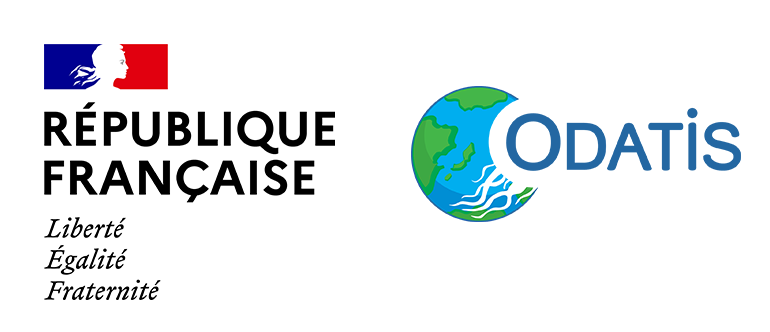Détails de l'évènement
Ocean Science Meeting 2022
L'échéance de soumission des résumés est fixée au 29 septembre 2021, dans la liste des sessions suivantes:
- Air-Sea Interactions
- Coastal and Estuarine Biology and Biogeochemistry
- Coastal and Estuarine Hydrodynamics and Sediment Processes
- Chemical Tracers, Organic Matter and Trace Elements
- Deep Sea Processes and Exploration
- Education & Outreach
- Fish and Fisheries
- High Latitude Environments
- Islands and Reefs
- Marine Ecology and Biodiversity
- Ocean Biology and Biogeochemistry
- Climate and Ocean Change
- Ocean Data Science, Analytics, and Management
- Ocean Modeling
- Ocean Policy and the Blue Economy
- Ocean Sustainability and the UN Decade
- Ocean Technologies and Observatories
- Physical-Biological Interactions
- Physical Oceanography: Mesoscale and Larger
- Physical Oceanography: Mesoscale and Smaller
Trois sessions sur l'oxygène dissous intéresseront particulièrment le CES Oxygène dissous:
- OB01 : Nouvelles approches pour l'étude de la biogéochimie et de l'écologie microbienne des zones marines pauvres en oxygène
- OB05 : Moteurs et conséquences de l'appauvrissement de l'oxygène dissous marin : des estuaires à l'océan ouvert
- OB15 : Le génie de l'oxygène
Ci-dessous, résumé du programme de ces 3 sessions et modes de présentation (en présentiel/virtuel ou virtuel uniquement)
OB01 New approaches for the study of the biogeochemistry and microbial ecology of marine oxygen deficient zones
Session Format: Hybrid
Oxygen deficient zones (ODZs) uniquely harbor a distinct set of redox-dependent microbial and biogeochemical processes that play important global roles in marine element cycling. Their importance has been further amplified by the prospect of ODZ expansion in response to climate change, with potential large global impacts. ODZs are characterized by steep chemical gradients which, driven by a delicate interplay between biogeochemical and physical processes on a range of spatial and temporal scales, foster complex interactions between aerobic and anaerobic processes that intricately link the cycling of C, N, P, S as well as trace metals. Potent greenhouse (N2O and CH4) or toxic (H2S) gases are also liberated as by-products of ODZ microbial metabolisms. Over the last decade there have been unprecedented advances in methods to elucidate ODZ biogeochemical transformation and mechanisms, the link to ocean physics, and the microbial communities involved. Technological advances in sensor development include detection of nanomolar O2 concentrations allowing for O2 threshold assessments of anaerobic metabolisms. Gas tension devices (GTD) allow in situ measurement of biogenic N2, and optical sensors provide fresh insights to particle distribution and composition. A cross-disciplinary and integrative view of ODZ processes is being provided by autonomous and high resolution (time, space) platforms operated over months to years. Significant improvements in sequencing technology and novel single cell techniques have better characterized microbial communities, key players and their function. Sensitive stable and radioisotope geochemical and biomolecular approaches have provided insight into the complex interplay between microbes, nutrients and organic matter cycling in ODZs. This session seeks to bring together researchers using new observational and analytical approaches to both reveal and understand the complex interplay between chemical, biological and physical processes in ODZs.
OB05 Drivers and consequences of marine dissolved oxygen depletion: from estuaries to the open ocean
Session Format: Virtual
Estuarine and coastal hypoxic sites are emerging across the globe, many of which are attributed to anthropogenic activities but are exacerbated by climate change. The open ocean is also losing oxygen due to the increasing global temperature. To combat oxygen loss, understanding of the drivers is essential, whereas oxygen depletion consequences not only tell how things will change, but also clarify the significance of these changes. The mechanisms behind oxygen loss not only include solubility decrease and stratification increase, but also changes in nutrient input, circulation, mixing and respiration. Proxies established in sedimentary or fossil studies shed light on past marine oxygen depletion histories, and look to the future to yield understanding of how marine oxygen depletion will develop and provide feedback, dependent on both the changing natural and anthropogenic stressors. Our deeper understanding or prediction of marine dissolved oxygen depletion, in terms of both its drivers and consequences, its past and future, its steady state and dynamic features, is the base of scientific policy and solutions. In turn policies and solutions test our understanding of oxygen depletion. This session welcomes all oxygen depletion studies from varied disciplines that emphasize physical, chemical, biological, ecological, policy or solution aspects, covering both steady-state (oxygen deficiency) and dynamic process (deoxygenation) investigations.
OB15 The Wizard of O2
Session Format: Hybrid
“Follow the yellow brick road” …to our session: The amount of biological dissolved oxygen in the ocean is controlled by plankton photosynthesis and respiration. In the surface oxic ocean, O2 and CO2 can be exchanged with the atmosphere regulating the global atmospheric budget of these gases and by extension, the Earth’s climate. In deeper waters, oxygen minimum zones (OMZ) are spatially expanding and intensifying, with models projecting continued O2 loss into the future. Global warming may change planktonic community composition and in turn change the balance of O2 produced and consumed. In order to determine future changes in dissolved oxygen and how shifts in the plankton community may impact O2 cycling, we need to validate methods that can measure oxygen concentration, plankton production, and respiration in an accurate and reliable way. This session will bring together all topics focused on past, present and future cycling of marine O2, plankton oxygen production, microbial respiration, OMZs, deoxygenation, oxygen-monitoring, oxygen air-sea gas exchange, and techniques such as oxygen sensors, stable oxygen isotopes, O2/Ar, in vivo INT, autonomous floats, and any other novel technique in the field.
Plus d'information
- sur le site de l'OSM: programme, inscription, ...


